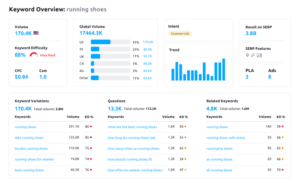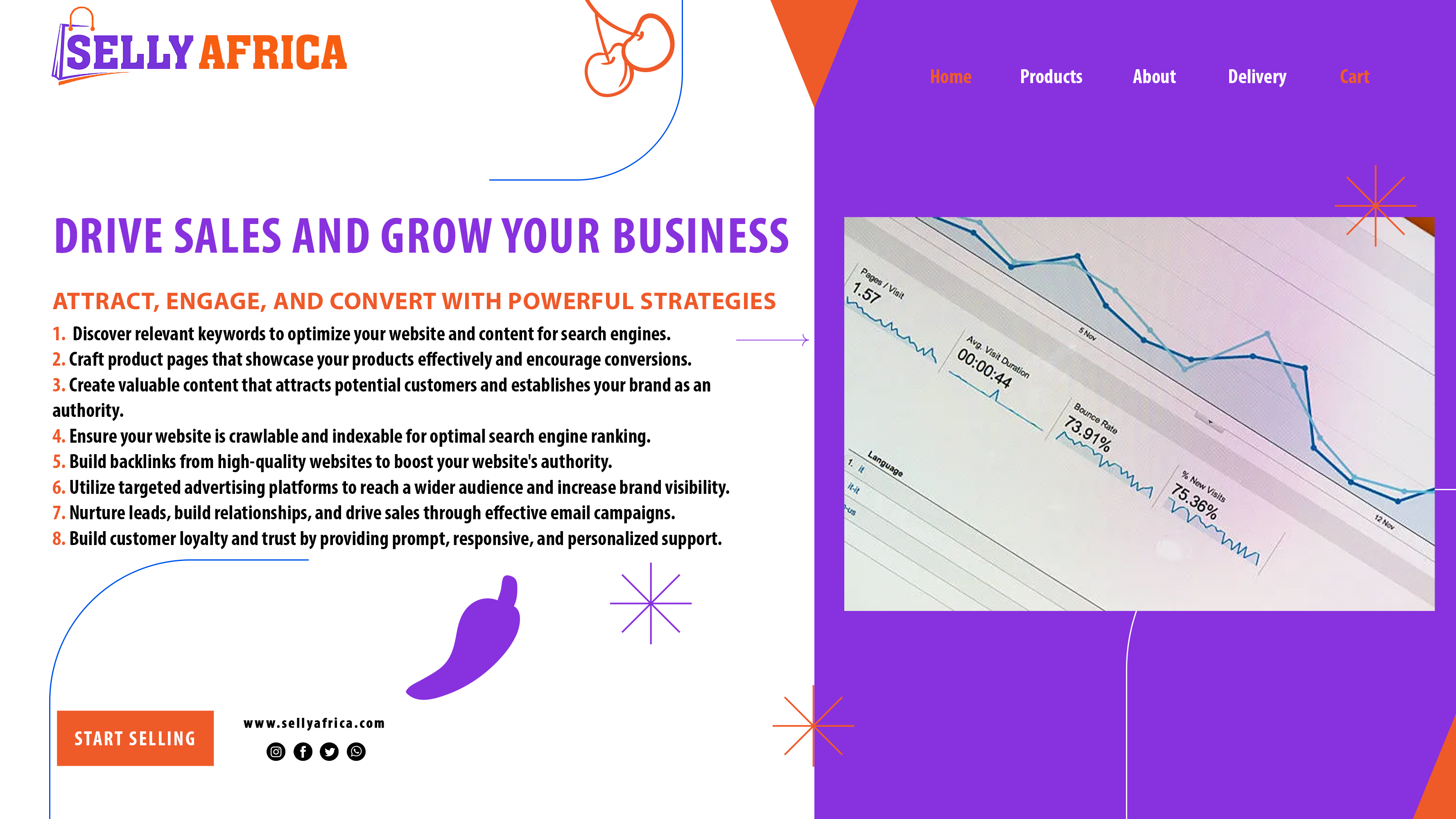In the digital age, e-commerce has revolutionized the way we shop and sell. With a global market at your fingertips, the potential for growth is immense. However, the vastness of the online world also means that competition is fierce. To stand out, you need to implement robust marketing strategies that not only attract customers but also create lasting relationships with them.
Keyword research
Keyword research forms the foundation of any successful SEO strategy. Identifying the search terms your target audience uses to find products like yours is crucial for optimizing your website and content. Utilize tools like Google Keyword Planner, Ahrefs, and SEMrush to:

- Uncover relevant keywords: Discover high-volume, low-competition keywords that align with your product offerings and target audience.
- Understand search intent: Analyze the intent behind different keywords (informational, navigational, transactional) to tailor your content accordingly.
- Prioritize long-tail keywords: Focus on long-tail keywords with higher conversion rates, as they indicate users closer to the purchasing decision stage.
Craft compelling product pages
Product pages are your digital storefronts, and their optimization is paramount to attracting and converting customers. Here are some key elements to consider:
- Compelling product titles: Include relevant keywords naturally within your product titles to improve search engine ranking.
- High-quality product descriptions: Provide detailed and informative descriptions that highlight product features, benefits, and specifications.
- Engaging visuals: Utilize high-resolution images and videos that showcase your products from various angles.
- Customer reviews and ratings: Encourage customer reviews and display positive ratings prominently to build trust and social proof.
- Clear calls to action (CTAs): Make it easy for customers to purchase by using strong CTAs like “Add to Cart” or “Buy Now.”
Content marketing
Content marketing goes beyond product descriptions. Create valuable and informative content that attracts potential customers, educates them about your products, and establishes your brand as an authority in your niche. Consider: 
- Blog posts: Share informative articles and guides related to your products and industry.
- Infographics and visual content: Utilize visually appealing content to break down complex information and increase engagement.
- Email marketing: Build an email list and nurture leads with targeted email campaigns that promote new products, offer special deals, and provide valuable content.
- Social media marketing: Leverage social media platforms like Instagram, Facebook, and TikTok to connect with your audience, showcase your products, and run targeted ad campaigns.
Technical SEO
Technical SEO ensures your website is crawlable and indexable by search engines, directly impacting your organic search ranking. Here are some key aspects to address:

- Website speed: Optimize your website loading speed for a seamless user experience.
- Mobile-friendliness: Ensure your website is responsive and optimized for mobile devices, as a significant portion of online shopping occurs on smartphones.
- Sitemap and robots.txt: Create a sitemap to guide search engines through your website structure and utilize robots.txt to control how search engines crawl and index your pages.
- Structured data markup: Implement schema markup to provide search engines with richer information about your products, enhancing search results.
Link building
Earning backlinks from high-quality websites signals trust and authority to search engines, boosting your website’s ranking potential. Here are some strategies to consider:
- Guest blogging: Contribute informative guest posts to relevant websites in your niche.
- Broken link building: Find broken links on relevant websites and offer your own content as a replacement.
- Social media engagement: Actively engage with your audience on social media platforms to build relationships and potentially earn backlinks.
Paid advertising
Paid advertising platforms like Google Ads and social media advertising offer targeted reach and can significantly increase your brand visibility. Utilize these platforms to:
- Target specific demographics and interests: Reach your ideal customer base with laser precision.
- Run A/B tests: Experiment with different ad formats, copy, and targeting options to optimize your campaigns for maximum ROI.
- Track and analyze results: Monitor the performance of your ad campaigns and make data-driven adjustments for continuous improvement.
Email marketing
Email marketing remains a powerful tool for nurturing leads, building customer relationships, and driving sales. Here are some best practices:
- Segment your email list: Tailor your email content to different segments of your audience based on their interests and purchase history.
- Personalize your messaging: Use customer names and purchase history to create a more personal connection.
- Offer valuable content and promotions: Provide exclusive discounts, early access to new products, and informative content to incentivize engagement.
Customer service
Exceptional customer service is vital for building brand loyalty and encouraging repeat business. Here are some key aspects to focus on:
- Prompt and responsive communication: Address customer inquiries and concerns promptly and professionally.
- Offer multiple support channels: Provide various ways for customers to contact you, such as email, live chat, and phone support.
- Go the extra mile: Exceed customer expectations by offering personalized solutions and exceeding their needs.
Remember: E-commerce marketing is an ongoing process that requires continuous adaptation and experimentation. By implementing these essential marketing tips, analyzing data, and refining your strategies, you can establish a robust online presence, attract new customers, and drive sustainable growth for your e-commerce business.By following these comprehensive marketing strategies and continuously adapting your approach, you can position your e-commerce business for long-term success in the ever-competitive online marketplace.


I feel this is onee off the such a lot important information for me.
And i am glad studying your article. But hould commentary on few basic things, The site taste is ideal, tthe articles is actally nice : D.
Excellent task, cheers https://Odessaforum.Biz.ua/
Hello,
Thank you so much for your kind words and for taking the time to leave a comment on our post. I’m thrilled to hear that you found the information valuable and enjoyed reading the article. Your feedback about the site design and the content is greatly appreciated, and it’s always wonderful to hear from our readers.
I apologize for the delay in responding. Your input is very important to us, and we’re glad to have you as part of our community. If you have any specific questions or suggestions for future articles, please feel free to share. We’re always looking to improve and provide the best content for our audience.
Thanks again for your support, and cheers to many more insightful reads
Best regards,
Selly Africa